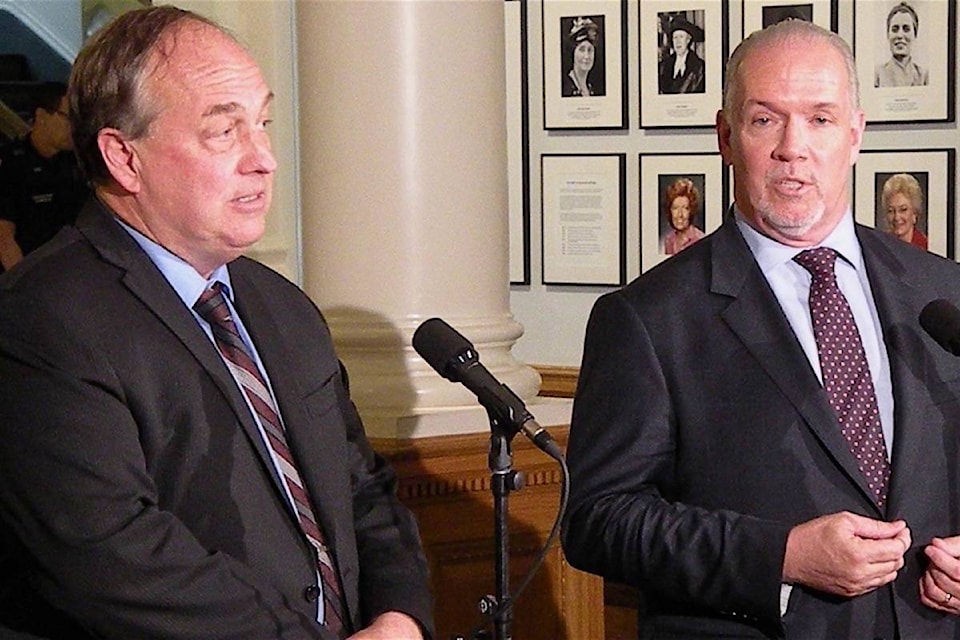Looking through the power sharing agreement between B.C.’s two ambitious opposition parties, it’s difficult to see what the three-member B.C. Greens gain in supporting the 41-member B.C. NDP.
Bridge tolls are one example. Green leader Andrew Weaver campaigned to keep them, and proposed expanding the user-pay principle to other big infrastructure, such as a second crossing of Okanagan Lake at Kelowna. Tolls are also way to get more people onto public transit.

But selective tolls on users of the Port Mann and Golden Ears crossings of the Fraser River, were a political hot button that Horgan pushed hard, with a pledge to eliminate them. Increased NDP seats in Surrey and Maple Ridge were likely helped by that.
The “Green-DP” agreement is silent on tolls. But both parties say if they form government, the NDP budget will kill the tolls. Green MLAs may argue in favour of tolls, but they will support the budget, one of the critical “confidence votes” that must pass if the minority government is to survive.
The Greens also put water in their wine on carbon taxes, a signature issue not mentioned by climate researcher Weaver as he set his conditions for supporting another party. The parties agreed to start raising the carbon tax next year, not wait until 2020 as the NDP platform pledged. But the increases are only in $5-per-tonne annual increments, half the increase the Greens campaigned on.
The Greens also compromised on their opposition to the Site C dam under construction on the Peace River. The Green-NDP deal pledges to “immediately refer the Site C dam construction project to the B.C. Utilities Commission,” but Horgan confirmed there will be no halt to construction while a review proceeds.
Weaver also called for a change to a proportional representation voting system, to be implemented first, with a referendum to be held after one election. There are different systems, but the intent is that when a party like the Greens gets 17 per cent of the votes as they did May 9, they get 17 per cent of the seats.
The agreement pledges to hold a referendum first, in the fall of 2018. The system that would be proposed, and the wording of the question, remain to be worked out.
There have been few comments on the inner workings of negotiations, but a couple were made by Norman Spector, the former deputy to premier Bill Bennett and prime minister Brian Mulroney who was brought in to advise the Greens on strategy.
On Monday, after the agreement was reached with the NDP, Spector gave a glimpse inside the talks with a couple of comments on his Twitter account.
Ultimately, @BCGreens recoiled [sometimes physically] at the prospect of supporting a Liberal government #bcpoli #bcelxn17
— Norman Spector (@nspector4) May 29, 2017
One gain for the Greens is clear, although it would likely have been offered by the B.C. Liberals as well. Official party status means additional funding for staff, and raises for all three MLAs.
As of April 1, basic MLA pay is $105,881.83 a year. As leader of a recognized third party, Weaver gets a 25 per cent raise, an additional $26,470.46 a year. Legislature rules also provide for 10 per cent increases for a third party house leader, caucus chair and party whip, whose job is to make sure MLAs attend for votes. The Greens have yet to reach the minimum four MLAs needed for automatic party status.
Tom Fletcher is B.C. legislature reporter and columnist for Black Press. Email: tfletcher@blackpress.ca Twitter: @tomfletcherbc



